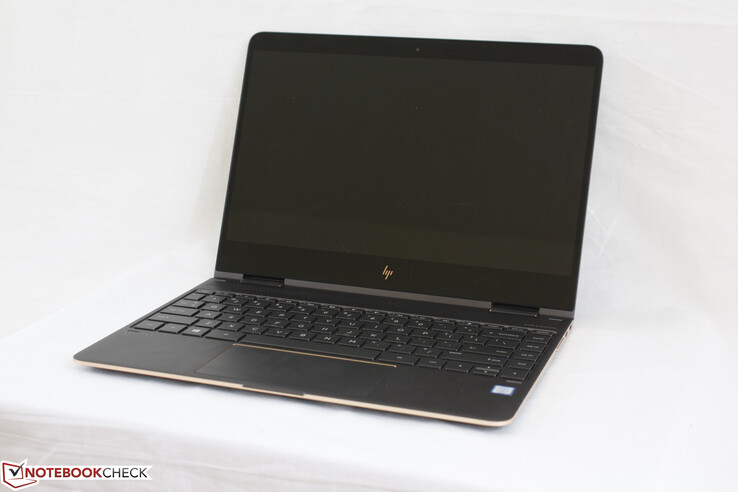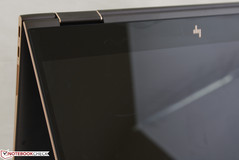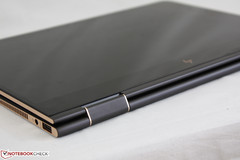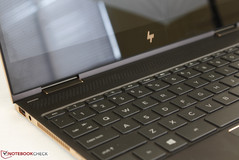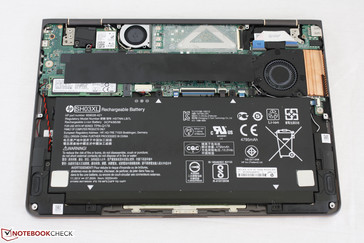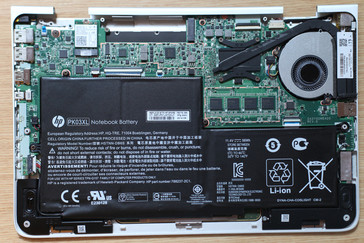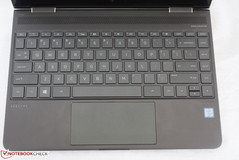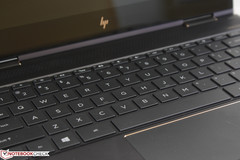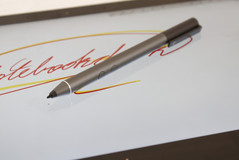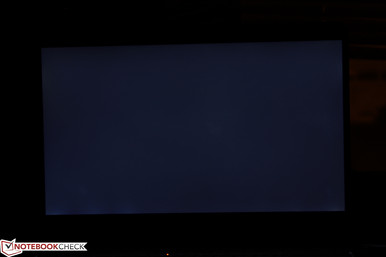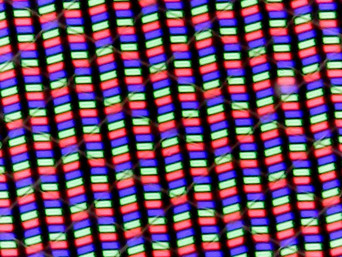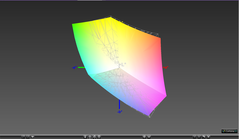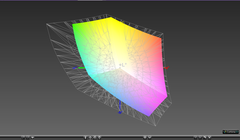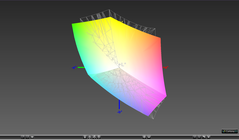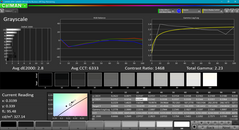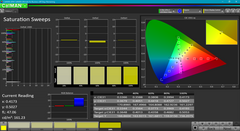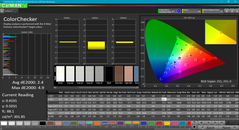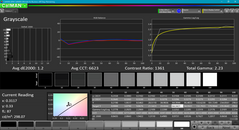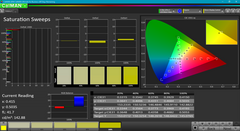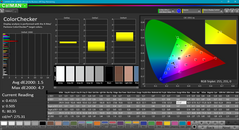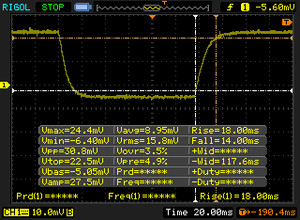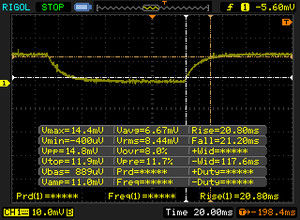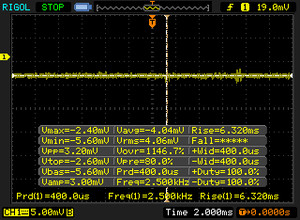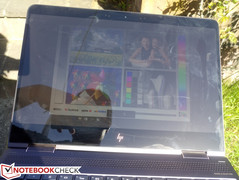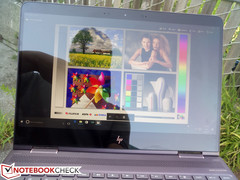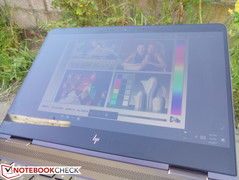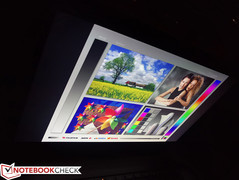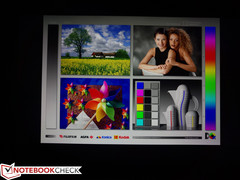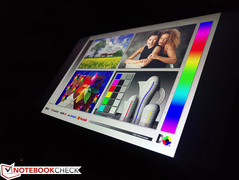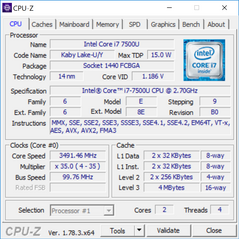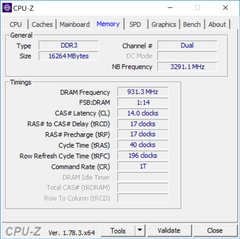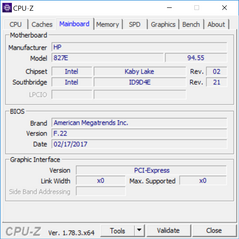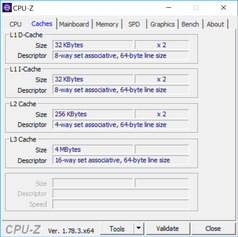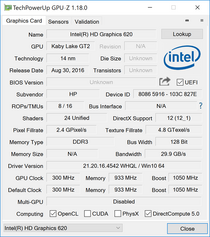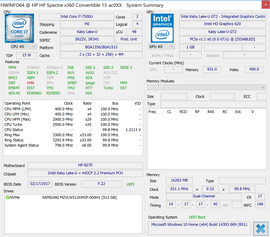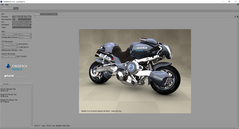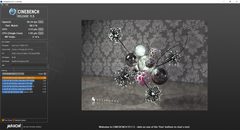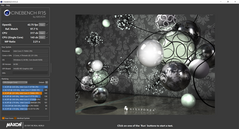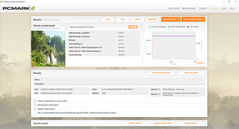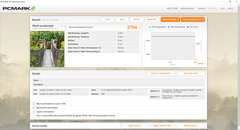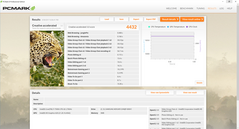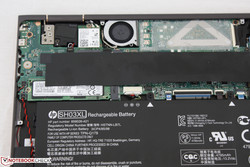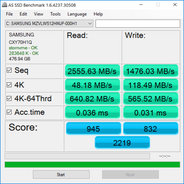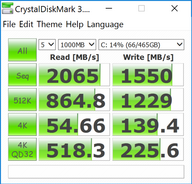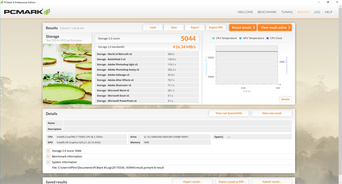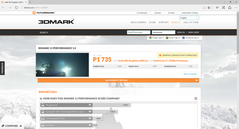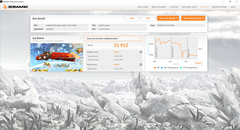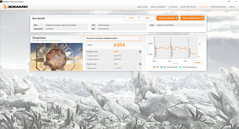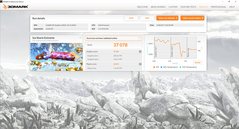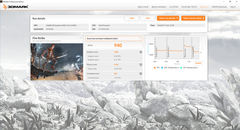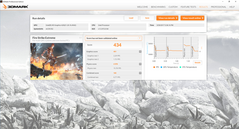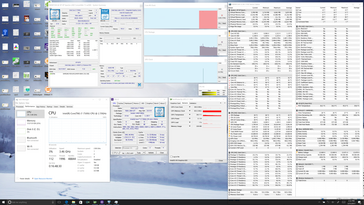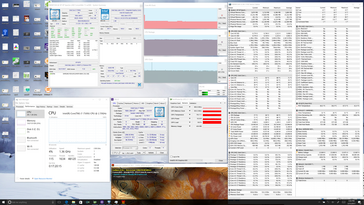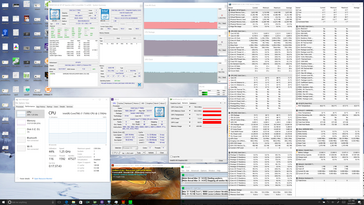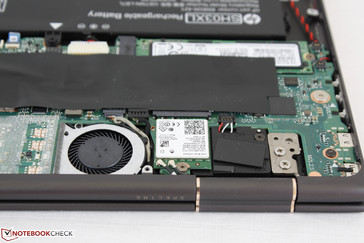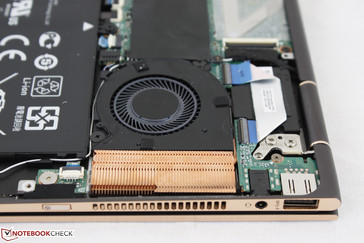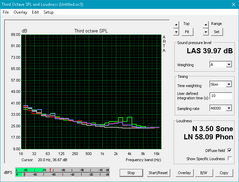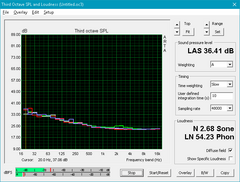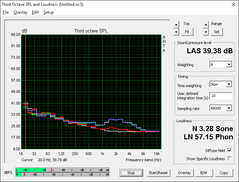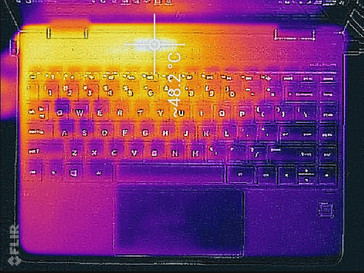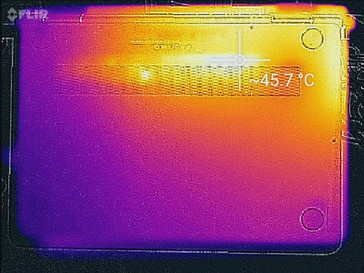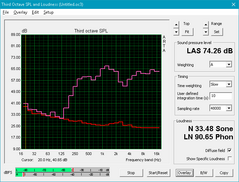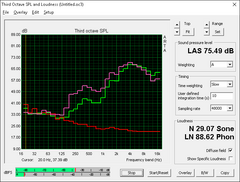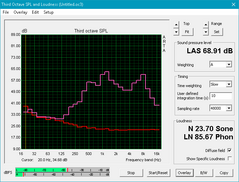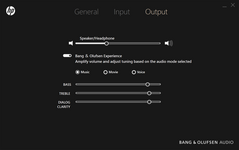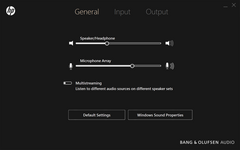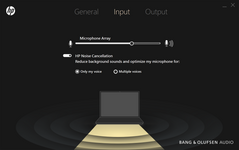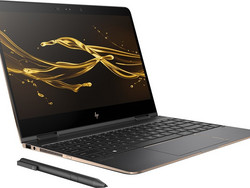HP Spectre x360 13 (7500U, 4K UHD) Convertible Review
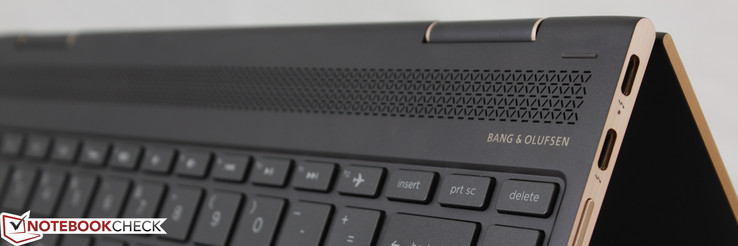
The second-generation Spectre x360 13 launched late last year and it was instantly recognized as the best Windows laptop for its design and ease of use. Cutting the display bezel down to mere millimeters was enough to make the 13.3-inch convertible one of the most practical in its category as all previous convertibles before it were arguably too bulky for comfortable tablet use or too slow to replace a dedicated laptop. After all, users who want a convertible 2-in-1 are likely interested in it replacing both an aging tablet and notebook.
The early 2017 update adds just a couple new features to the series including the lucrative 4K UHD option and native support for an active stylus pen. The 8 GB FHD version starts at just $1200 USD, but the 4K display and sleeker Dark Ash color scheme inspired by the Spectre 13 are reserved for the highest-end SKU starting at $1600 USD. Otherwise, users are treated to essentially the same experience as the 2016 version.
The Spectre x360 13 competes against the Lenovo Yoga 910, Asus Zenbook Flip UX310, and the recently released Dell XPS 13 9365 in the 13.3-inch convertible category. Check out our existing reviews on other Spectre x360 configurations for more details on the series.
Case
Aside from the new Gold color scheme reserved only for the 4K UHD SKU, users can expect the same high quality CNC aluminum chassis from top to bottom as the Spectre x360 13 FHD. Our test unit exhibits no noticeable crevices or unintended gaps between edges and corners. Applying pressure on the center of the keyboard surface or the outer lid will result in no significant warping. Similarly, both the base and lid are highly resistant to twisting and do not creak when handled. In comparison, the lid of the Yoga 900 and 910 are more flexible while the thicker lid of the XPS 13 9360 is slightly firmer. The dual hinges, though not as flashy as the wristband hinge on the Lenovo, are evenly firm at all angles. Slight teetering will occur whilst typing or opening the lid that we find to be unobtrusive. In all, there's very little to complain about the design of the Spectre x360 convertible.
In terms of size and weight, the Spectre convertible is lighter, smaller, and thinner than both the 2015 MacBook Air 13 and the new Lenovo Yoga 910. It's also nearly identical to the XPS 13 9365 except that the HP is wider by about 20 mm in order to preserve the original placement of the webcam and avoid those awkward camera angles. The drawback, of course, is that the bezel is larger on one of its three sides and just slightly heavier than the Dell equivalent. Tablet mode is a bit easier to handle on the XPS 13 9365 as a result, albeit at a system performance cost.
HP says that the added support for active stylus pens has resulted in a thicker chassis. At 13.8 mm, the new model is just one-tenth of a millimeter thicker than the 2016 Spectre x360 13. The minuscule differences in size are insignificant during everyday use, but it's still worth mentioning that the chassis is not perfectly identical to last year's model.
Connectivity
Port selection remains unchanged from the 2016 model. Either of the two Thunderbolt 3 ports can be used for charging or to connect external 4K monitors and docking stations for expanded versatility. The single USB 3.0 Type-A port is also invaluable for external mice and thumb drives. More ultra-thin notebooks are beginning to omit USB Type-A including the MacBook Pro 13, XPS 13 9365, and even HP's own Spectre 13.
Unfortunately, the HP convertible is still lacking an integrated SD reader not unlike the Yoga 910. Even the new EliteBook x360 13, which shares similar design qualities to the Spectre x360 13, carries a MicroSD reader.
Communication
The removable 2x2 Intel 8265 M.2 module integrates Bluetooth 4.2 and promises a maximum theoretical transfer rate of 867 Mbps. Our own tests show a real-world transfer rate of 622 Mbps when connected to a standard 802.11ac network on a Linksys EA8500 test router. We experienced no connectivity issues during our time with the HP test unit. Unlike the EliteBook x360 equivalent, the Spectre x360 includes no WWAN or SIM options.
| Networking | |
| iperf3 transmit AX12 | |
| Dell XPS 15 9560 (i7-7700HQ, UHD) | |
| Dell XPS 13-9365 2-in-1 | |
| HP Spectre x360 13-ac033dx | |
| iperf3 receive AX12 | |
| Dell XPS 15 9560 (i7-7700HQ, UHD) | |
| HP Spectre x360 13-ac033dx | |
| Dell XPS 13-9365 2-in-1 | |
Accessories
Included extras are a faux leather sleeve and, unlike on the 2016 Spectre x360 13, an active stylus pen. The pen itself is about 14 cm long and is as thick or thicker than a standard ballpoint pen for easier handling. On the down side, it doesn't come with a cap to protect the writing tip and there is no dedicated pen recess on the notebook for carrying unlike on certain Lenovo ThinkPads. HP has said that such a feature would have increased the thickness of the Spectre design, decrease the size and usability of the pen, and compromised the integrity of the chassis.
Maintenance
The bottom panel can be carefully removed with a sharp edge, T5 hex wrench, and a Philips screwdriver. Be sure to remove the extra screws hidden underneath the two rear rubber feet before prying open the edges and corners of the panel. Once removed, users will have direct access to the removable WLAN module and M.2 2280 SSD. The glued black strip provides additional protection for the components and soldered RAM modules. It's worth noting that the processor is on the underside of the motherboard not unlike the MSI GS63/73 series and is in contrast to the original 2015 Spectre x360 13.
Warranty
The standard one-year limited warranty applies to new purchases of the Spectre x360 13. Since HP also caters to enterprises and businesses, warranty options are extensive if users want additional assistance or protection against damage. In contrast, the EliteBook x360 13 comes standard with a three-year warranty. Please see our Guarantees, Return policies and Warranties FAQ for country-specific information.
Input Devices
Keyboard
The darker color scheme may be new for the series, but the keyboard remains the same. Travel is still shallow at 1.3 mm and the firm keys feel light to press and do not wiggle in place. Auditory feedback is quieter than on a Dell XPS but noisier than on a Lenovo AccuType keyboard. Tactile feedback is still satisfactory and not at all spongy for an agreeable typing experience. Strangely enough, the Space bar on this particular test unit feels much firmer than on our previous Spectre x360 13 FHD unit.
Visually, we prefer the dark-colored keys over the bright silver keys on the older Spectre x360 13 as this contrasts better with the white lettering. HP continues to offer just one brightness level for the keyboard backlight - on or off - whereas nearly every other manufacturer offers at least two levels of adjustable brightness settings. Unlike the Lenovo Yoga series, there is no hard button to lock display rotation when in tablet mode.
Touchpad
The wide (12 x 6 cm) trackpad surface is responsive with smooth gliding characteristics and no jitters or "dead" spots. Not only is the trackpad larger than on the XPS 13, but its integrated mouse keys are firmer and louder in feedback when pressed. Clicking repeatedly in quick succession is not tiresome as the force required to input a click is quite light. Travel is shallow and slightly spongy; there is some "give" before the system will register a click. Overall, however, the trackpad is comfortable to use should an external mouse be unavailable.
Touchscreen
Tablet mode is much more practical than on the first generation Spectre x360 13 and definitely the larger Spectre x360 15. The stylus feels natural to hold and use, though the feel and glide of a plastic tip against glass will never quite match the traditional pen and paper experience. The HP series does not feature Lenovo's Lift'n Lock either, so be prepared to constantly click the touchpad and keyboard keys when handling the convertible. Thankfully, these inputs are automatically disabled once the lid is opened past 270 degrees.
The two buttons on the pen can be configured to perform different functions including Volume control, Shift, Tab, Play, Screenshot, and others. Button travel is shallow with firm and auditory feedback when pressed. However, they are slightly more difficult to press than on the Surface Pro 4 stylus simply because both buttons sit completely flush against the pen surface whereas the buttons on the Surface Pro 4 stylus protrude just slightly for easier use.
Display
The star of the new 2017 Spectre x360 13 is its 4K UHD option that was conspicuously missing on last year's Spectre x360 13. When compared to the FHD panel of the 2016 Spectre x360 13, this 4K UHD panel is slightly dimmer with slower black-white and gray-gray response times. In turn, the display carries deeper contrast levels and a wider gamut for sharper and more saturated colors. Video playback at native 4K resolution is incredibly detailed and the higher resolution panel pairs well with the supplied active stylus for notetaking. The LG Philips LGD054D panel is currently found on no other 13.3-inch notebook in our database.
One area of improvement we wish to see on a future Spectre x360 refresh is a brighter backlight with improved backlight distribution. Though 300 nits is sufficient for indoor use, it is nowhere near as bright as the MacBook Air 13 or even the standard Spectre 13. We believe that convertible notebooks in general should carry brighter panels since they are more portable and more likely to be used in outdoor conditions.
There is very slight uneven backlight bleeding along the bottom edge of the screen on our test unit that is unnoticeable during everyday use.
| |||||||||||||||||||||||||
Brightness Distribution: 83 %
Center on Battery: 302.6 cd/m²
Contrast: 1210:1 (Black: 0.25 cd/m²)
ΔE ColorChecker Calman: 2.4 | ∀{0.5-29.43 Ø4.78}
ΔE Greyscale Calman: 2.8 | ∀{0.09-98 Ø5}
97.1% sRGB (Argyll 1.6.3 3D)
65.5% AdobeRGB 1998 (Argyll 1.6.3 3D)
71.1% AdobeRGB 1998 (Argyll 3D)
96.8% sRGB (Argyll 3D)
69.4% Display P3 (Argyll 3D)
Gamma: 2.2
CCT: 6333 K
| HP Spectre x360 13-ac033dx LG Philips LGD054D, IPS, 13.3", 3840x2160 | Apple MacBook Pro 13 2016 (2.9 GHz) APPA033, , 13.3", 2560x1600 | Dell XPS 13-9365 2-in-1 IPS, 13.3", 1920x1080 | Lenovo Yoga 910-13IKB-80VF004CGE AU Optronics AUO323D / B139HAN03.2, IPS, 13.9", 3840x2160 | HP Spectre 13-v131ng CMN1374, IPS UWVA, 13.3", 1920x1080 | HP Spectre x360 13-w023dx Chi Mei CMN1367, IPS, 13.3", 1920x1080 | |
|---|---|---|---|---|---|---|
| Display | 23% | -30% | -9% | -8% | -7% | |
| Display P3 Coverage (%) | 69.4 | 99.2 43% | 47.32 -32% | 62.2 -10% | 64.6 -7% | 65.4 -6% |
| sRGB Coverage (%) | 96.8 | 99.9 3% | 71.1 -27% | 90.1 -7% | 88.8 -8% | 90.4 -7% |
| AdobeRGB 1998 Coverage (%) | 71.1 | 87.6 23% | 48.83 -31% | 63.5 -11% | 64.8 -9% | 65.8 -7% |
| Response Times | -39% | -9% | 8% | -7% | 17% | |
| Response Time Grey 50% / Grey 80% * (ms) | 42 ? | 47.2 ? -12% | 48 ? -14% | 46 ? -10% | 46 ? -10% | 33.2 ? 21% |
| Response Time Black / White * (ms) | 32 ? | 53 ? -66% | 32.8 ? -3% | 24 ? 25% | 33 ? -3% | 28 ? 12% |
| PWM Frequency (Hz) | 1042 ? | |||||
| Screen | 19% | -50% | -58% | -33% | -52% | |
| Brightness middle (cd/m²) | 302.6 | 569 88% | 322.6 7% | 348 15% | 404 34% | 334.6 11% |
| Brightness (cd/m²) | 282 | 542 92% | 306 9% | 310 10% | 382 35% | 319 13% |
| Brightness Distribution (%) | 83 | 90 8% | 91 10% | 80 -4% | 91 10% | 90 8% |
| Black Level * (cd/m²) | 0.25 | 0.56 -124% | 0.19 24% | 0.25 -0% | 0.35 -40% | 0.336 -34% |
| Contrast (:1) | 1210 | 1016 -16% | 1698 40% | 1392 15% | 1154 -5% | 996 -18% |
| Colorchecker dE 2000 * | 2.4 | 1.4 42% | 7.7 -221% | 7.86 -228% | 5.37 -124% | 6.21 -159% |
| Colorchecker dE 2000 max. * | 4.9 | 2.9 41% | 11.1 -127% | 13.43 -174% | 9.46 -93% | 12 -145% |
| Greyscale dE 2000 * | 2.8 | 1.8 36% | 7.9 -182% | 8.25 -195% | 6.44 -130% | 7.71 -175% |
| Gamma | 2.2 100% | 2.16 102% | 2.88 76% | 2.05 107% | 2.52 87% | 2.36 93% |
| CCT | 6333 103% | 6877 95% | 7044 92% | 6834 95% | 6738 96% | 6458 101% |
| Color Space (Percent of AdobeRGB 1998) (%) | 65.5 | 78.4 20% | 44.1 -33% | 58 -11% | 58 -11% | 58.6 -11% |
| Color Space (Percent of sRGB) (%) | 97.1 | 99.3 2% | 69.9 -28% | 90 -7% | 89 -8% | 90 -7% |
| Total Average (Program / Settings) | 1% /
12% | -30% /
-41% | -20% /
-39% | -16% /
-25% | -14% /
-34% |
* ... smaller is better
Color space is approximately 97 percent and 66 percent of the sRGB and AdobeRGB standards, respectively. This is slightly larger than the FHD panel on last year's Spectre x360 13 and significantly better than the recently released XPS 13 9365. The near complete sRGB coverage should satisfy digital artists where accurate sRGB representation is key.
Further measurements with a X-Rite spectrophotometer reveal accurate grayscale and colors out of the box. In fact, the display appears to be better calibrated at factory compared to many competing notebooks. End-user calibration will improve the display even further as shown by our results below. Interestingly, red is represented less accurately out of the primary and secondary colors, though this is but a small nitpick.
Display Response Times
| ↔ Response Time Black to White | ||
|---|---|---|
| 32 ms ... rise ↗ and fall ↘ combined | ↗ 18 ms rise | |
| ↘ 14 ms fall | ||
| The screen shows slow response rates in our tests and will be unsatisfactory for gamers. In comparison, all tested devices range from 0.1 (minimum) to 240 (maximum) ms. » 85 % of all devices are better. This means that the measured response time is worse than the average of all tested devices (20.2 ms). | ||
| ↔ Response Time 50% Grey to 80% Grey | ||
| 42 ms ... rise ↗ and fall ↘ combined | ↗ 20.8 ms rise | |
| ↘ 21.2 ms fall | ||
| The screen shows slow response rates in our tests and will be unsatisfactory for gamers. In comparison, all tested devices range from 0.165 (minimum) to 636 (maximum) ms. » 66 % of all devices are better. This means that the measured response time is worse than the average of all tested devices (31.6 ms). | ||
Screen Flickering / PWM (Pulse-Width Modulation)
| Screen flickering / PWM not detected | |||
In comparison: 53 % of all tested devices do not use PWM to dim the display. If PWM was detected, an average of 8111 (minimum: 5 - maximum: 343500) Hz was measured. | |||
Outdoor visibility is average as the backlight is not strong enough to overcome direct sunlight or glare from the super-glossy touchscreen. The wide IPS viewing angles and 360-degree hinges help in minimizing glare, but onscreen texts and images will still look washed out. Tablet mode may be convenient, but don't expect the screen to be as bright as a Surface Pro 4 or that old iPad laying around.
Performance
Core configuration is essentially identical to the 2016 Spectre x360 13 including the i7-7500U, integrated HD Graphics 620, and either 8 GB or 16 GB of soldered LPDDR3 RAM depending on the SKU. Unlike the larger Spectre x360 15, there are no dedicated Nvidia options for improved graphics performance. This makes the Spectre x360 13 a poorer choice for gaming and video editing despite the very accurate display colors.
Processor
The dual-core i7-7500U in the HP is slightly slower in multi-threaded workloads than on the ThinkPad 13 or XPS 13 9360 with the same processor. CineBench Multi-Thread shows the Dell and Lenovo systems ahead of the Spectre by 6 percent and 11 percent, respectively. Fortunately, CineBench Single-Thread reveals essentially identical scores between the three notebooks. In either case, users are unlikely to notice the slower multi-thread performance of the Spectre during everyday use.
Upgrading from the passively-cooled Core i7-7Y75 in the XPS 13 9365 to the i7-7500U in the Spectre will boost single-thread and multi-thread performance by 10 percent and 23 percent, respectively.
See our dedicated page on the Core i7-7500U for more technical information and benchmark comparisons.
Running CineBench Multi-Thread in a loop shows no major declines in performance over time. The initial score of 317 points falls to just 305 points by the 20th run to represent a drop of just four percent.
We can observe no performance impact when running the CineBench Single-Thread test unlike on last year's Spectre x360 13.
| wPrime 2.10 - 1024m | |
| Dell XPS 13-9365 2-in-1 | |
| Dell XPS 13 9360-4764 | |
| Dell Latitude 7280 | |
| HP Spectre x360 13-ac033dx | |
* ... smaller is better
System Performance
PCMark 8 scores are similar to the XPS 13 9365 convertible and sometimes lower depending on the benchmark. This is unexpected as the HP carries the objectively faster U-class processor, but the very high native resolution of this particular configuration may be responsible for the discrepancies.
We experienced no notable issues with the software or hardware during our time with the test unit.
| PCMark 8 | |
| Home Score Accelerated v2 | |
| HP Spectre 13-v131ng | |
| Apple MacBook Air 13 inch 2015-03 | |
| Lenovo Yoga 910-13IKB-80VF004CGE | |
| Dell XPS 13-9365 2-in-1 | |
| HP Spectre x360 13-ac033dx | |
| Work Score Accelerated v2 | |
| HP Spectre 13-v131ng | |
| Dell XPS 13-9365 2-in-1 | |
| Apple MacBook Air 13 inch 2015-03 | |
| HP Spectre x360 13-ac033dx | |
| Creative Score Accelerated v2 | |
| HP Spectre 13-v131ng | |
| Apple MacBook Air 13 inch 2015-03 | |
| HP Spectre x360 13-ac033dx | |
| Dell XPS 13-9365 2-in-1 | |
| PCMark 8 Home Score Accelerated v2 | 3023 points | |
| PCMark 8 Creative Score Accelerated v2 | 4432 points | |
| PCMark 8 Work Score Accelerated v2 | 3706 points | |
Help | ||
Storage Devices
Most Ultrabooks and convertible systems make use of a single M.2 2280 drive as it is both thinner and lighter than the more traditional 2.5-inch SATA III solution. The NVMe-enabled Samsung M.2 SSD returns average read and write rates of just over 2000 MB/s and 1500 MB/s, respectively, to be faster than many of its closest competitors including the new updated Spectre 13. Users should still be wary of storage space with the Spectre convertible as M.2 SSDs can get quite expensive at higher capacities and there are no integrated SD card readers to fall back on.
See our growing list of SSDs and HDDs for more benchmark comparisons.
| HP Spectre x360 13-ac033dx Samsung PM961 NVMe MZVLW512HMJP | Apple MacBook Air 13 inch 2015-03 Apple SSD SD0256F | Dell XPS 13-9365 2-in-1 Toshiba NVMe THNSN5256GPUK | Lenovo Yoga 910-13IKB-80VF004CGE Samsung PM951 NVMe MZVLV512 | HP Spectre 13-v131ng Samsung PM961 NVMe MZVLW512HMJP | |
|---|---|---|---|---|---|
| CrystalDiskMark 3.0 | -25% | -27% | -6% | -4% | |
| Read Seq (MB/s) | 2065 | 1352 -35% | 1206 -42% | 1412 -32% | 1090 -47% |
| Write Seq (MB/s) | 1550 | 1111 -28% | 629 -59% | 578 -63% | 1088 -30% |
| Read 512 (MB/s) | 865 | 880 2% | 966 12% | 701 -19% | 753 -13% |
| Write 512 (MB/s) | 1229 | 1023 -17% | 410.7 -67% | 580 -53% | 911 -26% |
| Read 4k (MB/s) | 54.7 | 21.93 -60% | 32.93 -40% | 43.5 -20% | 57.5 5% |
| Write 4k (MB/s) | 139.4 | 30.94 -78% | 121.2 -13% | 159.7 15% | 140.2 1% |
| Read 4k QD32 (MB/s) | 518 | 339.5 -34% | 411 -21% | 570 10% | 497.1 -4% |
| Write 4k QD32 (MB/s) | 225.6 | 342.9 52% | 250.2 11% | 488.7 117% | 416 84% |
GPU Performance
The integrated HD Graphics 620 GPU in the Spectre is within just a few percentage points of the similarly equipped ThinkPad X1 Carbon, EliteBook 820 G4, and ThinkPad 13 according to 3DMark 11 Graphics. Overall performance is still slower than even the entry-level GeForce 920MX and is only about 10 percent faster than the passively-cooled HD Graphics 615 in the XPS 13 9365, so the machine is clearly not intended for playing the latest 3D titles. Perhaps more importantly, native 4K60 playback of YouTube videos is smooth with CPU utilization hovering in the 10 to 30 percent range depending on the bit rate.
See our dedicated page on the HD Graphics 620 GPU for more technical information and benchmark comparisons.
| 3DMark 11 Performance | 1735 points | |
| 3DMark Ice Storm Standard Score | 51912 points | |
| 3DMark Cloud Gate Standard Score | 6054 points | |
| 3DMark Fire Strike Score | 940 points | |
| 3DMark Fire Strike Extreme Score | 434 points | |
Help | ||
Stress Test
We subject the system to unrealistically high loads to identify for any throttling or stability issues. When running Prime95, the CPU can be observed operating at a steady 2.8 GHz or 100 MHz higher than its base clock rate. While the CPU is technically not throttling, it is still unable to maintain very high Turbo Boost speeds as the i7-7500U is rated for a maximum of 3.5 GHz. CPU temperature plateaus at about 83 C. Running both Prime95 and FurMark simultaneously to stress the CPU and integrated GPU will throttle the CPU down to 1.3 GHz while the GPU maintains a respectable 800 MHz. When gaming, expect a CPU temperature in the mid-to-high 70 C range.
Running on batteries will not throttle CPU and GPU power. A 3DMark 11 run on batteries returns Physics and Graphics scores of 4325 and 1517 points, respectively, compared to 4427 and 1569 points when on mains.
| CPU Clock (GHz) | GPU Clock (MHz) | Average CPU Temperature (°C) | |
| Prime95 Stress | 2.8 | -- | 83 |
| FurMark Stress | -- | 900 | 77 |
| Prime95 + FurMark Stress | 1.3 | 800 | 73 |
| Unigine Valley Stress | 1.6 | 1000 | 76 |
Emissions
System Noise
Most notebooks with ULV Core ix processors are equipped with just a single system fan whereas the Spectre x360 13 makes use of two. On the other hand, most notebooks are not nearly as thin as the Spectre, so two asymmetrical fans may have been more optimal for this particular design.
The dual fans are idle and noiseless during very low processing loads and when first booting the system. Unfortunately, the fans are quite sensitive to onscreen loads as video playback or moderate browsing will bump fan noise to an audible 34 dB(A) against a silent background of 28.7 dB(A). Running on the Power Saver profile will not result in quieter operation - instead, it will simply take a little longer before the fans pick up in speed during use. The system is otherwise silent when word processing and appears to be quieter when on battery power as opposed to AC power.
Average load with 3DMark 06 results in a recorded fan noise of just under 36 dB(A). Thus, while the HP runs louder than the competition when under low loads, it runs a bit quieter when under medium loads. Maximum load with both Prime95 and FurMark results in a fan noise of just under 40 dB(A), which is common for most ULV notebooks.
As shown by our microphone measurements below, fan noise from the Spectre x360 13 is higher-pitched with a peak at 4k Hz compared to 2k to 3k Hz for the XPS 13 or Spectre 13. Thus, the fans in the Spectre x360 13 are more noticeable during use even if the decibel levels are similar between the systems. This may be due to the smaller 25 mm fan as we can observe a similar phenomenon on the MSI GS63/GS73 series.
We can notice coil whining on our test unit when placing an ear directly on the keyboard. The noise is thankfully insignificant and should be unnoticeable during day-to-day use. We experienced much louder coil whines on certain Dell models like the Latitude 7480 or 5280Dell Latitude 7480 (7600U, FHD) Laptop Review.
Noise level
| Idle |
| 28.7 / 34.2 / 35.8 dB(A) |
| Load |
| 35.8 / 39.6 dB(A) |
 | ||
30 dB silent 40 dB(A) audible 50 dB(A) loud |
||
min: | ||
| HP Spectre x360 13-ac033dx HD Graphics 620, i7-7500U, Samsung PM961 NVMe MZVLW512HMJP | Apple MacBook Pro 13 2016 (2.9 GHz) Iris Graphics 550, 6267U, Apple SSD AP0256 | Dell XPS 13-9365 2-in-1 HD Graphics 615, i7-7Y75, Toshiba NVMe THNSN5256GPUK | Lenovo Yoga 910-13IKB-80VF004CGE HD Graphics 620, i7-7500U, Samsung PM951 NVMe MZVLV512 | HP Spectre 13-v131ng HD Graphics 620, i7-7500U, Samsung PM961 NVMe MZVLW512HMJP | |
|---|---|---|---|---|---|
| Noise | 6% | 1% | 0% | ||
| off / environment * (dB) | 28.7 | 30.2 -5% | 31.7 -10% | 30.4 -6% | |
| Idle Minimum * (dB) | 28.7 | 30.2 -5% | 31.7 -10% | 30.4 -6% | |
| Idle Average * (dB) | 34.2 | 30.2 12% | 31.7 7% | 30.4 11% | |
| Idle Maximum * (dB) | 35.8 | 30.2 16% | 31.7 11% | 30.4 15% | |
| Load Average * (dB) | 35.8 | 33 8% | 38.4 -7% | 40 -12% | |
| Load Maximum * (dB) | 39.6 | 36.2 9% | 34.7 12% | 40 -1% |
* ... smaller is better
Temperature
Surface temperatures are generally cool when idling with noticeably warmer spots around the first row of keyboard keys. When under extreme processing loads, this quadrant can warm to just over 48 C. Our temperature maps below show this point source to be away from the palm rests and QWERTY keys, so the notebook never becomes uncomfortable for typing no matter the workload. Nonetheless, the left side of the notebook will become warmer than the right due to the orientation of the CPU and its cooling system. This is compared to the recent XPS 13 where we were able to measure a surface temperature of 44 C right atop of the "R" key and almost 50 C on the underside surface.
(-) The maximum temperature on the upper side is 48 °C / 118 F, compared to the average of 35.4 °C / 96 F, ranging from 19.6 to 60 °C for the class Convertible.
(-) The bottom heats up to a maximum of 45.4 °C / 114 F, compared to the average of 36.8 °C / 98 F
(+) In idle usage, the average temperature for the upper side is 23.7 °C / 75 F, compared to the device average of 30.3 °C / 87 F.
(+) The palmrests and touchpad are cooler than skin temperature with a maximum of 31.6 °C / 88.9 F and are therefore cool to the touch.
(-) The average temperature of the palmrest area of similar devices was 27.9 °C / 82.2 F (-3.7 °C / -6.7 F).
Speakers
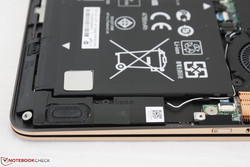
Microphone measurements show the integrated B&O speakers to be louder and more balanced than the speakers of the XPS 13 9365 2-in-1. Bass is still underrepresented, but at least treble is not exaggerated as is common on smaller notebooks or tablets. Maximum volume will introduce no noticeable static and will reverberate the chassis just slightly.
The pre-installed B&O Audio software provides just a few speaker adjustments as shown below. Though easy to use, its options are nowhere near as comprehensive as Sound Blaster X-Fi on gaming notebooks or MaxxAudioPro on the Dell XPS series.
HP Spectre x360 13-ac033dx audio analysis
(-) | not very loud speakers (67.1 dB)
Bass 100 - 315 Hz
(-) | nearly no bass - on average 16.9% lower than median
(-) | bass is not linear (15.8% delta to prev. frequency)
Mids 400 - 2000 Hz
(+) | balanced mids - only 3% away from median
(+) | mids are linear (6.9% delta to prev. frequency)
Highs 2 - 16 kHz
(+) | balanced highs - only 3% away from median
(±) | linearity of highs is average (9.5% delta to prev. frequency)
Overall 100 - 16.000 Hz
(±) | linearity of overall sound is average (23.4% difference to median)
Compared to same class
» 70% of all tested devices in this class were better, 5% similar, 25% worse
» The best had a delta of 6%, average was 20%, worst was 57%
Compared to all devices tested
» 69% of all tested devices were better, 6% similar, 25% worse
» The best had a delta of 4%, average was 24%, worst was 134%
Apple MacBook 12 (Early 2016) 1.1 GHz audio analysis
(+) | speakers can play relatively loud (83.6 dB)
Bass 100 - 315 Hz
(±) | reduced bass - on average 11.3% lower than median
(±) | linearity of bass is average (14.2% delta to prev. frequency)
Mids 400 - 2000 Hz
(+) | balanced mids - only 2.4% away from median
(+) | mids are linear (5.5% delta to prev. frequency)
Highs 2 - 16 kHz
(+) | balanced highs - only 2% away from median
(+) | highs are linear (4.5% delta to prev. frequency)
Overall 100 - 16.000 Hz
(+) | overall sound is linear (10.2% difference to median)
Compared to same class
» 7% of all tested devices in this class were better, 2% similar, 91% worse
» The best had a delta of 5%, average was 18%, worst was 53%
Compared to all devices tested
» 4% of all tested devices were better, 1% similar, 94% worse
» The best had a delta of 4%, average was 24%, worst was 134%
Frequency Comparison (Checkbox selectable!)
Graph 1: Pink Noise 100% Vol.; Graph 2: Audio off
Energy Management
Power Consumption
The system draws just over 5 W when idling on the lowest brightness setting and up to 10 W when idling on the highest brightness setting. This is just slightly more demanding than both the Yoga 910 and Spectre 13 while being about twice as power hungry as the weaker XPS 13 9365. Running 3DMark 06 will draw about 34 W not unlike its Spectre siblings. The MacBook Air demands significantly more power when under load due to its more capable integrated Iris Graphics GPU.
Running both Prime95 and FurMark simultaneously will draw just under 35 W from a small power adapter (~6.5 x 6.5 x 2.7 cm) rated for up to 45 W. The charger can also be used to recharge USB Type-C smartphones since it is able to safely output 5V/3A.
| Off / Standby | |
| Idle | |
| Load |
|
Key:
min: | |
| HP Spectre x360 13-ac033dx i7-7500U, HD Graphics 620, Samsung PM961 NVMe MZVLW512HMJP, IPS, 3840x2160, 13.3" | Apple MacBook Pro 13 2016 (2.9 GHz) 6267U, Iris Graphics 550, Apple SSD AP0256, , 2560x1600, 13.3" | Dell XPS 13-9365 2-in-1 i7-7Y75, HD Graphics 615, Toshiba NVMe THNSN5256GPUK, IPS, 1920x1080, 13.3" | Lenovo Yoga 910-13IKB-80VF004CGE i7-7500U, HD Graphics 620, Samsung PM951 NVMe MZVLV512, IPS, 3840x2160, 13.9" | HP Spectre 13-v131ng i7-7500U, HD Graphics 620, Samsung PM961 NVMe MZVLW512HMJP, IPS UWVA, 1920x1080, 13.3" | HP Spectre x360 13-w023dx i7-7500U, HD Graphics 620, Samsung PM951 NVMe MZVLV512, IPS, 1920x1080, 13.3" | |
|---|---|---|---|---|---|---|
| Power Consumption | -7% | 42% | 17% | 15% | 12% | |
| Idle Minimum * (Watt) | 5.3 | 2.1 60% | 3.1 42% | 4.3 19% | 3.6 32% | 5.5 -4% |
| Idle Average * (Watt) | 9.6 | 7.6 21% | 4.3 55% | 6.3 34% | 6.4 33% | 6.7 30% |
| Idle Maximum * (Watt) | 10.1 | 8.2 19% | 4.9 51% | 9 11% | 9.2 9% | 7.1 30% |
| Load Average * (Watt) | 34.4 | 56.4 -64% | 24.3 29% | 32.7 5% | 34 1% | 33.1 4% |
| Load Maximum * (Watt) | 34.8 | 59.8 -72% | 22.8 34% | 28.8 17% | 34.4 1% | 35.2 -1% |
* ... smaller is better
Battery Life
The 58 Wh internal battery is larger in capacity than some 13-inch notebooks including HP's own Spectre 13. Runtimes are good at just under 9 hours of real-world WLAN use on a screen brightness of 150 nits (setting 8/10). The comparable XPS 13 and Yoga 910 convertibles can last for even longer due to the more power-efficient CPU and even larger battery capacity, respectively. Strangely, idling on Power Saver mode and on the minimum screen brightness setting will only last for 13 hours compared to 20 hours on the Spectre x360 13 FHD possibly due to pre-installed apps running in the background at the time of testing.
Charging from near empty to 100 percent will take roughly 2.5 hours with the included adapter. We also attempted to charge the notebook via generic USB Type-C cables such as those included with newer smartphones. Unfortunately, this invoked a popup warning that the connected charging cable is not compatible with the system.
| HP Spectre x360 13-ac033dx i7-7500U, HD Graphics 620, 57.8 Wh | Apple MacBook Pro 13 2016 (2.9 GHz) 6267U, Iris Graphics 550, 49.2 Wh | Dell XPS 13-9365 2-in-1 i7-7Y75, HD Graphics 615, 46 Wh | Lenovo Yoga 910-13IKB-80VF004CGE i7-7500U, HD Graphics 620, 78 Wh | HP Spectre 13-v131ng i7-7500U, HD Graphics 620, 38 Wh | HP Spectre x360 13-w023dx i7-7500U, HD Graphics 620, 57.8 Wh | |
|---|---|---|---|---|---|---|
| Battery runtime | -19% | 34% | 36% | -23% | 21% | |
| Reader / Idle (h) | 13.2 | 16.2 23% | 17.8 35% | 12 -9% | 20.6 56% | |
| WiFi v1.3 (h) | 9 | 9.4 4% | 11.4 27% | 10.7 19% | 6.6 -27% | 9.3 3% |
| Load (h) | 1.9 | 1.1 -42% | 2.9 53% | 2.9 53% | 1.3 -32% | 2 5% |
Pros
Cons
Verdict
HP has made its Spectre x360 13 even better by incorporating 4K UHD and active pen support for a superior tablet experience. This is still the same lightweight and easy-to-handle 2-in-1 that made the 2016 model stand out as one of the most practical convertibles in its size category.
Other than the aforementioned small number of updates, however, we're slightly disappointed that HP hadn't taken the time to improve the experience even further. For example, the addition of a SD reader, manual fan control software, and a brighter display backlight would have better differentiated this early refresh from the initial 2016 FHD lineup. It's tempting to use the Spectre x360 13 outdoors especially now that an active stylus is included in each box, but the backlight is not nearly as bright as it could have been.
Both the XPS 13 9365 and Yoga 910 have been widely available in the months since our initial review of the 2016 Spectre x360 13 with advantages and disadvantages for each. The Dell is indeed lighter and smaller without sacrificing screen size, but no 4K UHD options exist and the passively-cooled CPU is measurably slower. On the flip side, the Yoga 910 is slightly larger in screen size with similar 4K UHD and i7-7500U SKUs, but it lacks active pen support and is both wider and heavier than the HP. As the middle-ground option for consumers, the new Spectre x360 13 is currently the best of both worlds in terms of performance and portability.
This early and incremental 2017 refresh finally puts 4K UHD and active pen support on the admired late 2016 Spectre x360 13 lineup. Not much else has changed, but that's ok - the convertible still strikes an excellent balance of size and power for comfortable use on all modes.
HP Spectre x360 13-ac033dx
- 04/05/2017 v6 (old)
Allen Ngo




